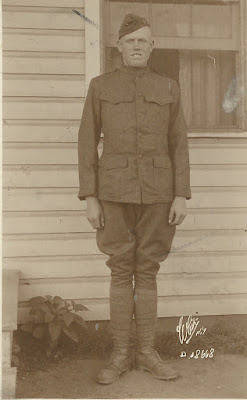Marinus Christensen was adopted as a small child in Denmark by Jens Christensen and Karen Marie Johannesen. Not long afterward they went to America. Jens died as they crossed the Great Plains so Marinus grew up in the home of his sister and brother-in-law Mary and Ove Oveson. When he died, his son could not give the name of Marinus's parents for the death certificate.
Now, we have easy access to Danish records. The records show the birth of a child named Marinus Marcusen, just a few days after the family remembered, but in the correct rural community.
The official recorded as parents, "The unmarried Kirsten Marie Johansen, 21 years, from Kjæret, and the assumed father, bachelor Anton Marcusen from Smedegaard." Anton Marcusen appears to be Anton Marqvordsen. It's not the same surname, but he appears to be the only Anton from their rural area. In the 1860s Anton appears to have had two illegitimate sons with Kirsten (Christian and Marinus), one illegitimate daughter with Ane Kathrine Jensdatter (Petrine Marie), and then a legal family in the 1870s with Hanne Laurine Christensen.
There is still some conjecture involved in these conclusions, but here's an additional bit of evidence. Marinus was adopted by a family and taken to the US. He eventually lived most of his life in Arizona. His probable half-sister and her husband and children moved to the US in 1898 and settled in North Dakota. Her descendants who have done DNA testing show up as relatives. Here is a picture shared by her family. Note her resemblance to Marinus!
Here are a couple of pictures of Marinus to compare.

































